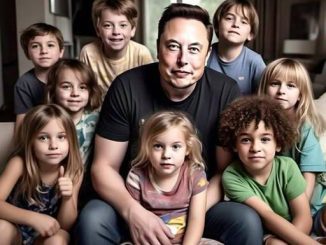
When Tesla first burst onto the scene in the mid-2000s, it was viewed by many as a longshot. A niche electric car startup trying to take on the giants of Detroit, Tokyo, and Stuttgart? The odds were steep. But fast-forward to 2025, and Tesla is not only surviving—it’s thriving as one of the most valuable companies on the planet, with a market capitalization that once outpaced every traditional automaker combined.
At the heart of this meteoric rise is one man: Elon Musk. A risk-taker with a relentless belief in innovation, Musk has driven Tesla from a boutique brand to a global powerhouse—and redefined the possibilities of energy, transportation, and sustainability in the process.
Tesla’s Bold Beginnings
In 2008, Tesla launched the Roadster, its first vehicle, at a time when electric cars were seen as underpowered novelties. The Roadster changed that narrative—proving that EVs could be fast, sleek, and desirable. But this was just the beginning. Musk’s ambition wasn’t just to build a car company—it was to spark a revolution.
With the release of the Model S in 2012, Tesla made electric cars aspirational. Then came the more affordable Model 3, which smashed sales records and brought EVs to the mainstream. Tesla’s unique blend of style, performance, and eco-consciousness began winning over consumers, investors, and critics alike.
The Gigafactory Gamble
Tesla’s success didn’t just hinge on making great cars. Musk realized early on that the supply chain—especially for batteries—was the real bottleneck in scaling EV production. His answer? Gigafactories—massive manufacturing facilities built to produce batteries and electric powertrains at an unprecedented scale.
From Nevada to Shanghai to Berlin, Tesla’s Gigafactories are now landmarks of the energy transition. These sprawling campuses have enabled Tesla to ramp up production, drive down costs, and control its own supply chain—a critical advantage in a volatile global market.
Beyond the Car: Tesla’s Energy Revolution
While cars may be Tesla’s most visible products, they’re only part of the story. Tesla is increasingly positioning itself as an energy company, with products like the Powerwall (a home energy storage solution), Powerpack, and Megapack (grid-scale storage).
These innovations help homes, businesses, and even entire utilities store and manage renewable energy from sources like solar and wind. By making clean energy more reliable and accessible, Tesla is solving one of the biggest challenges of the 21st century: how to transition away from fossil fuels without sacrificing stability or efficiency.
In places like California, Australia, and Europe, Tesla’s energy products are already having a transformative effect—powering homes, stabilizing power grids, and enabling a new era of sustainable living.
Autopilot and the Future of AI
Tesla is also leading the race toward autonomous driving. With its Autopilot and Full Self-Driving (FSD) systems, Tesla is leveraging real-world data and AI to create a smarter, safer driving experience. Though still controversial and under regulatory scrutiny, Tesla’s bold approach to autonomy is pushing the industry forward, forcing regulators, competitors, and the public to grapple with the future of mobility.
A Climate Mission With Capitalist Muscle
What makes Tesla truly unique is its ability to fuse a moral mission with capitalist ambition. While many companies talk about sustainability, Tesla lives it—putting zero-emission vehicles on the road, deploying renewable energy solutions, and constantly innovating.
Yet at the same time, it’s a for-profit powerhouse. Tesla’s ability to marry financial success with environmental progress has become a blueprint for a new kind of business—one that doesn’t just respond to the climate crisis, but actively profits from solving it.
Challenges on the Road Ahead
Tesla’s journey hasn’t been without bumps. From production delays to quality control issues, from public spats with regulators to Musk’s polarizing persona—there have been no shortage of controversies. And competition in the EV space is heating up, with legacy automakers and startups alike launching their own electric models.
But despite these challenges, Tesla’s brand remains strong. Its loyal customer base, vast charging network, and relentless innovation give it an edge that few can match.
Conclusion: More Than a Car Company
Tesla’s story is far from over, but its legacy is already clear. It has shown that electric cars aren’t a niche product—they’re the future. It has proven that renewable energy can be scalable, profitable, and essential. And under Elon Musk’s unconventional leadership, it has transformed from a scrappy startup into a symbol of what’s possible when vision meets execution.
As the world accelerates toward a more sustainable future, Tesla isn’t just along for the ride—it’s behind the wheel.


